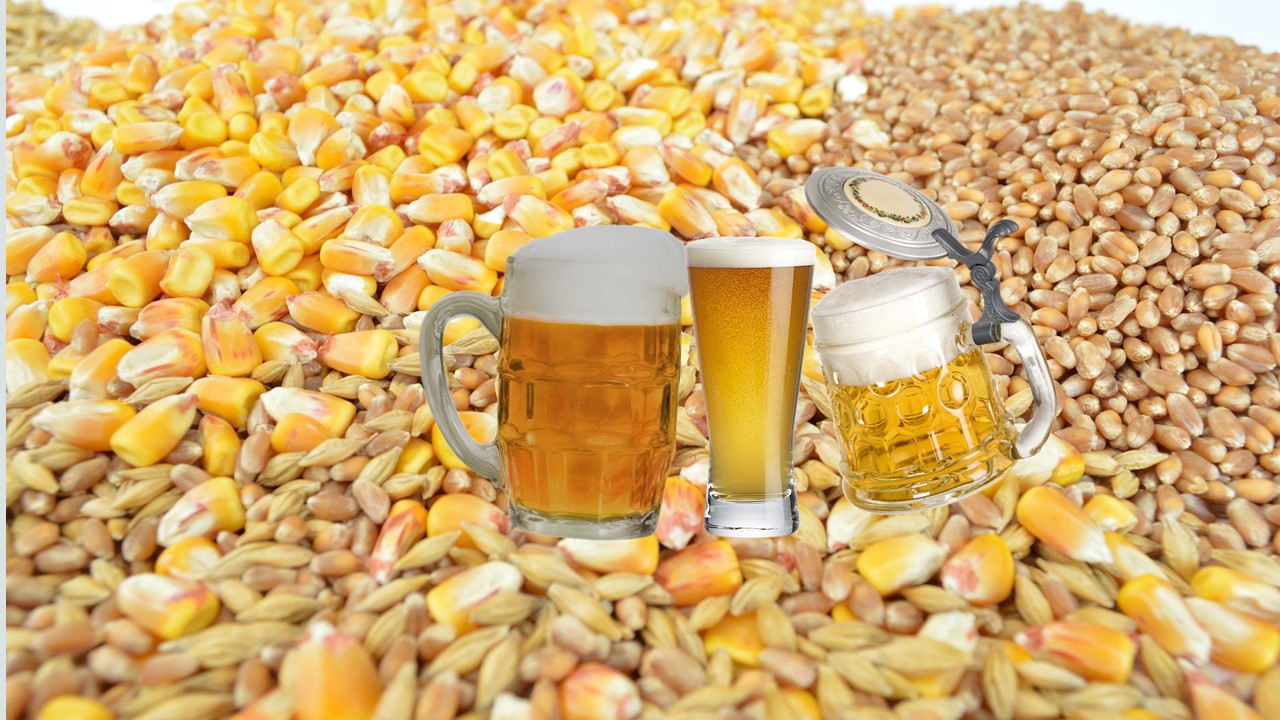Barley malt substitutes – their role today and in near future. Part 1 – Sugar adjuncts and barley, corn and rice as cereal adjuncts
DOI:
https://doi.org/10.18832/kp2021.68.602Keywords:
brewing adjuncts, barley malt substitutes, sugar adjuncts, starchy adjuncts, barley, corn, riceAbstract
Although barley malt is considered a traditional appropriate raw material for beer production, there are several reasons to introduce alternative sugar or starchy materials into brewing. Economic and market demands play a crucial role in the selection of raw materials. However, different adjuncts bring various technological challenges due to their specific physicochemical properties as well as the degree of processing when entering to the brewery. This review is focused on the current practice as well as on innovations in the use of several barley malt substitutes. The beer production from various proportions of adjuncts is presented step by step and the pros and cons associated with technological changes and equipment are discussed. The impact on sensory character is also considered. The aim of the paper is to offer theoretical background and reveal the latest possibilities for practice.
References
Aastrup, S. (2010). Beer from 100% barley. Scandinavian Brewers’ Review, 67(4), 28–33.
Adebowale, A. A., Sanni, S. A., Karim, O. R., Ojoawo, J. A. (2010). Malting characteristics of Ofada rice: chemical and sensory qualities of malt from ofada rice grains. International Food Research Journal, (17), 83–88.
Amienyo, D., Azapagic, A. (2016). Life cycle environmental impacts and costs of beer production and consumption in the UK. International Journal of Life Cycle Assessment, 21(4), 492–509. https://doi.org/10.1007/s11367-016-1028-6
Basařová, G., Šavel, J., Basařová, P., Brož, A. (2021). Pivovarství – teorie a praxe výroby piva (Brewing – theory and practice of beer production) (2nd edition). Prague: Havlíček Brain Team, pp. 952. ISBN 78-80-87109-71-7
Beer Cartel. (2018). The Reinhetsgebot – German Purity Law [online]. In: beercartel.com.au [cit. 2022-03-20]. Retrieved from https://www.beercartel.com.au/blog/the-reinhetsgebot-german-purity-law/
BIER (2012). Research of the carbon footprint of beer. Beverage industry environmental roundtable [online]. In: bieroundtable.com [cit. 2022-03-20]. Retrieved from https://www.bieroundtable.com/publication/beer/
Błażewicz, J., Zembold-Guła, A. (2007). Milled corn products in worts production. Polish Journal of Food and Nutrition Science, 57(4A), 41–44. Retrieved from http://journal.pan.olsztyn.pl/MILLED-CORN-PRODUCTS-IN-WORTS-PRODUCTION,98781,0,2.html
Bogdan, P., Kordialik-Bogacka, E. (2017). Alternatives to malt in brewing. Trends in Food Science & Technology, 65, 1–9. https://doi.org/10.1016/j.tifs.2017.05.001
Briggs, D. E., Boulton, C. A., Brookes, P. A., Stevens, R. (2004). Brewing Science and Practice. Cambridge, England: Woodhead Publishing Limited, pp.34–44. ISBN 978-1855734906
Cooper, C., Evans, D., Yousif, A., Metz, N., Koutoulis, A. (2016). Comparison of the impact on the performance of small-scale mashing with different proportions of unmalted barley, Ondea Pro((R)), malt and rice. Journal of the Institute of Brewing, 122(2), 218–227. https://doi.org/10.1002/jib.325
Coors, J. (1976). Practical experience with different adjuncts. MBAA Technical Quarterly, 13(2), 117–123.
Curin, J., Cernohorsky, V., Stichauer, J. (1977). Surrogation with barely without enzyme preparations II. Wet grinding applications. Kvasny Prumysl, 23(2), 28–32. https://doi.org/10.18832/kp1977003
Dabija, A., Ciocan, M., Chetrariu, A., Codina, G. (2021). Maize and sorghum as raw materials for brewing, a review. Applied Science, 11(7), 3139. https://doi.org/10.3390/app11073139
de Moura, F., Mathias, T. (2018). A comparative study of dry and wet milling of barley malt and its influence on granulometry and wort composition. Beverages, 4(3), 51. https://doi.org/10.3390/beverages4030051
Debyser, W., Delvaux, F., Delcour, J. A. (1998). Activity of arabinoxylan hydrolyzing enzymes during mashing with barley malt or barley malt and unmalted wheat. Journal of Agricultural and Food Chemistry, 46(12), 4836–4841. https://doi.org/10.1021/jf9806107
Demeester, A., Laureys, D., Bailliere, J., Huys, J., Vermeir, P., De Leyn, I., … De Clippeleer, J. (2021). Comparison of congress mash with final 65°C mash for wort production with unmalted barley, tritordeum, and quinoa, with or without pregelatinization and/or enzyme addition. Journal of the American Society of Brewing Chemists, Early View. https://doi.org/10.1080/03610470.2021.1989571
Dongmo, S., Niebauer, S., Zarnkow, M., Becker, T. (2013). Different influences on lautering performance and wort quality attributes when brewing with 100 % unmalted barley. Brewing Science, 66(5–6), 55–64.
Dziedzoave, N. T., Graffham, A. J., Westby, A., Komlaga, G. (2010). Comparative assessment of amylolytic and cellulolytic enzyme activity of malts prepared from tropical cereals. Food Control, 21(10), 1349–1353. https://doi.org/10.1016/j.foodcont.2010.04.008
Evans, D., Redd, K., Haraysmow, S., Elvig, N., Metz, N., Koutoulis, A. (2014). The influence of malt quality on malt brewing and barley quality on barley brewing with ondea pro, compared by small-scale analysis. Journal of the American Society of Brewing Chemists, 72(3), 192–207. https://doi.org/10.1094/ASBCJ-2014-0630-01
Farnham, D. E., Benson, G. O., Pearce, R. . B. (2003). Corn perspective and culture. In P. J. White & L. A. Johnson (Eds.), Corn: Chemistry and technology (2nd edition). St. Paul, Minnesora: American Association of cereal chemists. ISBN: 09-132-50481
Fitzgerald, M. (2004). Starch. In E. T. Champagne (Ed.), Rice: Chemistry and Technology (3rd edition, pp. 109–140). St. Paul, Minnesota: American Association of Cereal Chemists. ISBN 978-0-12-746275-2
Fox, G., Yu, W., Nischwitz, R., Harasymow, S. (2019). Variation in maltose in sweet wort from barley malt and rice adjuncts with differences in amylose structure. Journal of the Institute of Brewing, 125(1), 18–27. https://doi.org/10.1002/jib.546
Fumi, M., Galli, R., Lambri, M., Donadini, G., De Faveri, D. (2011). Effect of full-scale brewing process on polyphenols in Italian all-malt and maize adjunct lager beers. Journal of Food Composition and Analysis, 24(4–5), 568–573. https://doi.org/10.1016/j.jfca.2010.12.006
Gallagher, E., Gormley, T., Arendt, E. (2004). Recent advances in the formulation of gluten-free cereal-based products. Trends in Food Science & Technology, 15(3–4), 143–152. https://doi.org/10.1016/j.tifs.2003.09.012
German Culture (2022). Reinheitsgebot [online]. In: germanculture.com. ua [cit. 2022-03-20]. Retrieved from https://germanculture.com.ua/german-facts/reinheitsgebot/
Glatthar, J., Heinisch, J., Senn, T. (2002). A study on the suitability of unmalted triticale as a brewing adjunct. Journal of the American Society of Brewing Chemists, 60(4), 181–187.
Goldammer, T. (2008). Beer Adjuncts. In The Brewer’s Handbook A Complete Book to Brewing Beer (Second Edition). USA: Apex Publishers. ISBN: 978-0967521206
Goode, D., Wijngaard, H., Arendt, E. (2005). Mashing with unmalted barley-impact of malted barley and commercial enzyme (Bacillus spp.) additions. MBAA Technical Quarterly, 42(3), 184–198.
Grooth, M., Schonenberg, S., Schull, F. (2013). The influence of novel raw materials on beer membrane filtration. Brauwelt International, 2013(3), 142–144.
Han, H., Kim, J., Choi, E., Ahn, H., Kim, W. (2016). Characteristics of beer produced from Korean six-row barley with the addition of adjuncts. Journal of the Institute of Brewing, 122(3), 500–507. https://doi.org/10.1002/jib.350
He, Y., Cao, Y., Chen, S., Ma, C., Zhang, D., Li, H. (2018). Analysis of flavour compounds in beer with extruded corn starch as an adjunct. Journal of the Institute of Brewing, 124(1), 9–15. https://doi.org/10.1002/jib.474
Helstad, S. (2013). Topics in brewing: brewing adjuncts – Liquid. MBAA Technical Quarterly, 50(3), 99–104. http://dx.doi.org/10.1094/TQ-50-3-0903-01
Hernandez-Carapia, M., Escalona-Buendia, H., Verde-Calvo, J. (2021). Influence of temperature and germination time on diastatic power of blue and red maize (Zea mays L.) malts. Emirates Journal of Food and Agriculture, 33(1), 56–66. https://doi.org/10.9755/ejfa.2021.v33.i1.2352
Hertrich, J. D. (2013). Topics in brewing: Brewing adjuncts. MBAA Technical Quarterly, 52(2), 72–81. http://dx.doi.org/10.1094/TQ-50-2-0425-01
Holub, P., Fiala, J. (2022). Regional differences of beer styles in early modern Europe. Kvasny Prumysl, 68(1), 572–584. https://doi.org/10.18832/kp2021.67.572
Jaukovic, M., Zecevic, V., Stankovic, S., Krnjaja, V., Nikic, T., Bailovic, S., Tadic, J. (2017). Effect of dilute alkaline steeping on mold contamination, toxicity, and nutritive value of maize malt. Journal of the American Society of Brewing Chemists, 75(4), 369–373. https://doi.org/10.1094/ASBCJ-2017-4043-01
Jin, H., Ferguson, K., Bond, M., Kavanagh, T., Hawthorne, D. (1993). Malt nitrogen parameters and yeast fermentation behaviour. In Proceedings of European Brewery Convention Congress (pp. 44–50). Oslo: IRL Press, Oxford. ISBN: 978-0199634668
Kelly, A. L., Moore, M. M., Arendt, E. K. (2008). New product development: The case of gluten-free food products. In E. K. Arendt & F. Dal Bello (Eds.), Gluten-free cereal products and beverages (pp. 413–425).
Burlington, Massachusetts: Academic Press, pp. 413–425. ISBN: 978-0-12-373739-7
Kok, Y., Ye, L., Muller, J., Ow, D., Bi, X. (2019). Brewing with malted barely or raw barley: what makes the difference in the processes? Applied Microbiology and Biotechnology, 103(3), 1059–1067. https://doi.org/10.1007/s00253-018-9537-9
Kordialik-Bogacka, E., Bogdan, P., Diowksz, A. (2014). Malted and unmalted oats in brewing. Journal of the Institute of Brewing, 120(4), 390–398. https://doi.org/10.1002/jib.178
Koszyk, P. F., Lewis, M. J. (1977). Unmalted grains as maltsters’ adjuvant and brewers’ adjunct. Journal of the American Society of Brewing Chemists, 35(2), 77–81. https://doi.org/10.1094/ASBCJ-35-0077
Kunz, T., Muller, C., Mato-Gonzales, D., Methner, F. (2012). The influence of unmalted barley on the oxidative stability of wort and beer. Journal of the Institute of Brewing, 118(1), 32–39. https://doi.org/10.1002/jib.6
Kunz, T., Woest, H., Lee, E., Muller, C., Methner, F. (2011). Improvement of the oxidative wort and beer stability by increased unmalted barely proportion. Brewing Science, 64(7–8), 75–82.
Li, H., Liu, F. (2015). Changes in organic acids during beer fermentation. Journal of the American Society of Brewing Chemists, 73(3), 275–279. https://doi.org/10.1094/ASBCJ-2015-0509-01
Li, X., Takahashi, T., Suzuki, N., Kaiser, H. (2011). The impact of climate change on maize yields in the United States and China. Agricultural Systems, 104(4), 348–353. https://doi.org/10.1016/j.agsy.2010.12.006
Lloyd, W. J. W. (1986). Adjuncts. Journal of the Institute of Brewing, 92(4), 336–345. https://doi.org/10.1002/j.2050-0416.1986.tb04420.x
Loiko, S., Romanova, Z. (2018). Using unmalted barley for brewing. P 94 Roceedings of the National Aviation University, N3(76), 93–98.
Lowe, D., Ulmer, H., van Sinderen, D., Arendt, E. (2004). Application of biological acidification to improve the quality and processability of wort produced from 50% raw barley. Journal of the Institute of Brewing, 110(2), 133–140. https://doi.org/10.1002/j.2050-0416.2004.tb00192.x
Ma, T., Zhu, L., Zheng, F., Li, Y., Li, Q. (2014). Evaluation of emerging factors blocking filtration of high-adjunct-ratio wort. Journal of Agricultural and Food Chemistry, 62(33), 8486–8490. https://doi.org/10.1021/jf5023109
MacLeod, L., Evans, E. (2016). Malting. In Reference Module in Food Science (pp.413–431). Elsevier. ISBN 978-0-08-100596-5. https://doi.org/10.1016/B978-0-08-100596-5.00153-0
Maia, C., Cunha, S., Debyser, W., Cook, D. (2021). Impacts of adjunct incorporation on flavor stability metrics at early stages of beer production. Journal of the American Society of Brewing Chemists, Early Access. https://doi.org/10.1080/03610470.2021.1993054
Masayuki, O. (2018). Liquor Tax Reform Japan. ATO Japan [online]. In: apps.fas.usda.gov [cit. 2022-03-11]. https://apps.fas.usda.gov/newgainapi/api/report/downloadreportbyfilename?filename=Liquor%20Tax%20Reform%20Japan_Tokyo%20ATO_Japan_4-9-2018.pdf
Mathias, T., Menezes, L., Servulo, E. (2019). Effect of maize as adjunct and the mashing proteolytic step on the brewer wort composition. Beverages, 5(4), 65. https://doi.org/10.3390/beverages5040065
Moll, M. (1994). Beer & Coolers. Andover, Hampshire: Intercept Ltd., pp. 550. ISBN 978-1898298090
Muntons. (2020). Muntons Sustainability Statement [online]. In: www. muntons.com [cit. 2022-03-11]. https://www.muntons.com/wp-content/uploads/2020/04/Muntons- Sustainability-Report-2020.pdf
Marconi, O. (2017). The Use of Rice in Brewing. In Valeria Sileoni (Ed.), Giuseppe Perretti ED1 – Jinquan Li (Trans.), Advances in International Rice Research (p. Ch. 4). Rijeka: IntechOpen. https://doi.org/10.5772/66450
Orhotohwo, O., Czipa, N., Kovacs, B., Alexa, L. (2021). Impacts of the use of gluten-free cereals and spices on the quality parameters of beer. Journal of Microbiology Biotechnology and Food Sciences, 11(1). https://doi.org/10.15414/jmbfs.3838
Perez-Carrillo, E., Serna-Saldivar, S., Chuck-Hernandez, C., Cortes-Callejas, M. (2012). Addition of protease during starch liquefaction affects free amino nitrogen, fusel alcohols and ethanol production of fermented maize and whole and decorticated sorghum mashes. Biochemical Engineering Journal, 67, 1–9. https://doi.org/10.1016/j.bej.2012.04.010
Piddocke, M., Kreisz, S., Heldt-Hansen, H., Nielsen, K., Olsson, L. (2009). Physiological characterization of brewer’s yeast in high-gravity beer fermentations with glucose or maltose syrups as adjuncts. Applied Microbiology and Biotechnology, 84(3), 453–464. https://doi.org/10.1007/s00253-009-1930-y
Poreda, A., Czarnik, A., Zdaniewicz, M., Jakubowski, M., Antkiewicz, P. (2014). Corn grist adjunct - application and influence on the brewing process and beer quality. Journal of the Institute of Brewing, 120(1), 77–81. https://doi.org/10.1002/jib.115
Romero-Medina, A., Estarron-Espinosa, M., Verde-Calvo, J., Lelievre-Desmas, M., Escalona-Buendia, H. (2021). Pigmented corn for brewing purpose: From grains to malt, a study of volatile composition. Journal of Food Processing and Preservation, 45(12). https://doi.org/10.1111/jfpp.16057
Šavel, J. (2015). Netradiční suroviny a náhražky sladu. In G. Basařová (Ed.), Sladařství – Teorie a praxe výroby sladu (pp. 145–158). Praha: Havlíček Brain Team. ISBN: 978-80-87109-47-2
Schoenenberg, S., Kreisz, S. (2010). The use of 100 percent unmalted barley. Brauwelt International, 28(1).
Steiner, E., Auer, A., Becker, T., Gastl, M. (2012). Comparison of beer quality attributes between beers brewed with 100% barley malt and 100% barley raw material. Journal of the Science of Food and Agriculture, 92(4), 803–813. https://doi.org/10.1002/jsfa.4651
Sterczynska, M., Stachnik, M., Poreda, A., Puzynska, K., Piepiorka-Stepuk, J., Fiutak, G., Jakubowski, M. (2021). Ionic composition of beer worts produced with selected unmalted grains. LWT-Food Science and Technology, 137. https://doi.org/10.1016/j.lwt.2020.110348
Stewart, G. (2016a). Chapter 2 - Adjuncts. In C. W. Bamforth (Ed.), Brewing Materials and Processes (pp. 27–46). San Diego: Academic Press. ISBN: 978-0-12-799954-8. https://doi.org/10.1016/B978-0-12-799954-8.00002-2
Stewart, G. (2016b). Beer: Raw materials and wort production. In B. Caballero, P. M. Finglas, & F. Toldrá (Eds.), Encyclopedia of Food and Health (pp. 355–363). Oxford: Academic Press. ISBN: 978-0-12-384953-3. https://doi.org/10.1016/B978-0-12-384947-2.00058-1
Taylor, J., Dlamini, B., Kruger, J. (2013). 125th Anniversary Review: The science of the tropical cereals sorghum, maize and rice in relation to lager beer brewing. Journal of the Institute of Brewing, 119(1–2), 1–14. https://doi.org/10.1002/jib.68
van Donkelaar, L. H. G., Hageman, J. A., Oguz, S., Noordman, T. R., Boom, R. M., van der Goot, A.-J. (2016). Combining unmalted barley and pearling gives good quality brewing. Journal of the Institute of Brewing, 122(2), 228–236. https://doi.org/10.1002/jib.319
Xie, W., Xiong, W., Pan, J., Ali, T., Cui, Q., Guan, D., … Davis, S. (2018). Decreases in global beer supply due to extreme drought and heat. Nature Plants, 4(11), 964–973. https://doi.org/10.1038/s41477-018-0263-1
Yano, M., Back, W., Krottenthaler, M. (2008). The impact of liquid adjunct and barley on wort and beer quality. Brewing Science, 61(1–2), 10–24.
Yeo, H., Liu, S. (2014). An overview of selected specialty beers: developments, challenges and prospects. International Journal of Food Science and Technology, 49(7), 1607–1618. https://doi.org/10.1111/ijfs.12488
Yorke, J., Cook, D., Ford, R. (2021). Brewing with unmalted cereal adjuncts: sensory and analytical impacts on beer quality. Beverages, 7(1), 4. https://doi.org/10.3390/beverages7010004
Zarnkow, M., Arendt, E. K., Back, W., Burberg, F., Gastl, M., Herrman, M., Kreisz, S. (2007). Influence of cereal adjuncts on beer flavour and flavour stability. Cerevisia, 32(2).
Zhang, D., He, Y., Ma, C., Li, H. (2017). Improvement of beer flavour with extruded rice as adjunct. Journal of the Institute of Brewing, 123(2), 259–267. https://doi.org/10.1002/jib.423
Zhu, L., Ma, T., Li, Y., Li, Q. (2015). Permeability analysis of high-adjunct-ratio spent grain layer in the high-gravity wort separation process. Process Biochemistry, 50(5), 846–852. https://doi.org/10.1016/j.procbio.2015.02.015
Zhuang, S., Shetty, R., Hansen, M., Fromberg, A., Hansen, P. B., Hobley, T. J. (2017). Brewing with 100 % unmalted grains: barley, wheat, oat and rye. European Food Research and Technology, 243(3), 447–454. https://doi.org/10.1007/s00217-016-2758-1

Downloads
Published
How to Cite
Issue
Section
License
Copyright (c) 2022 Martina Brožová, Dagmar Matoulková, Alexandr Mikyška; Lucie Kyselova

This work is licensed under a Creative Commons Attribution 4.0 International License.







